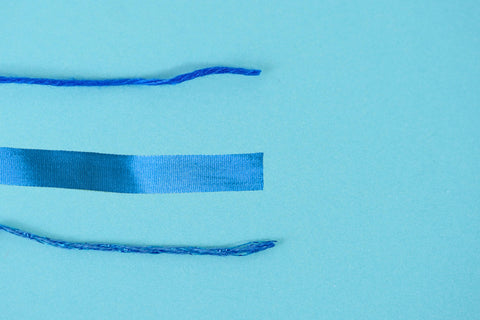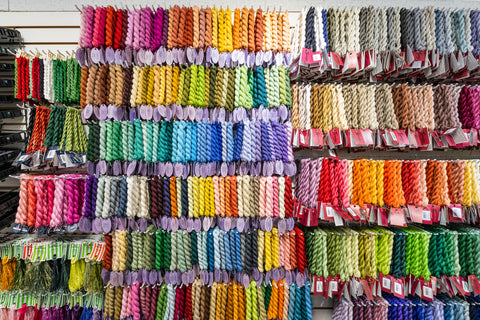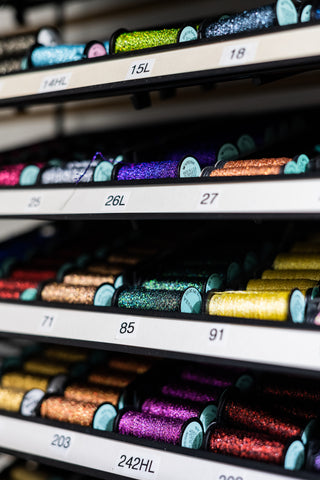To Ply or Not to Ply – sorry, Shakespeare! We just had to steal it! When you stitch, however, it’s not whether you should ply or not; it’s whether you need to ply or not.
Before we jump in, let’s explain what we mean when we ask you to “ply” something in one of our stitch guides. Certain threads are called “single strand” threads, while others are “multi-strand” threads.
Multi Strands:
Single Strand:
A good example of a single strand thread is the traditional Perle Cotton thread or one of the popular Silk Lamé Braid threads. As you pull the thread from its skein/card, you start stitching with it as-is.
The other style of thread is a “multi-strand” thread. Good examples of this thread are the traditional Floss threads or the popular Splendor series. These threads are actually made up on many thinner, skinnier threads pulled together to make one strand.
Multi-strand threads are excellent for their versatility. For example, you can use the same skein of Floss on a 13-count or 18-count canvas just by changing the number of plied threads you use while stitching.
Multi-strand threads can also be used to change the thickness of a stitch within the piece itself. For example, the standard use of Splendor thread is to take 4 ply from the larger group of 12 to stitch with on an 18-count canvas. However, if you need a very thin detail such as shoelaces atop a sneaker, for example, you can stitch the shoelaces using only 2 ply of the Splendor thread to give a more realistic, less clunky effect!
Whenever you ply threads from a larger group, it’s important to lay the threads flat and organized before you start to stitch. Sometimes individual thread strands will tangle as you separate them from the group, so laying the threads flat and equal to one another will ensure the best look with your stitching.
Not sure if your thread needs to be plied? The first rule of thumb is to remove plies of thread from your threaded needle any time your stitches appear thick on the canvas or the needle is difficult to pull through the canvas holes. If you find yourself in that situation, cut out your stitches and begin again with a few less plies in your thread grouping and see if your stitches improve!
For a thorough reference guide to our thread ply recommendations, visit our website and check out our Learn →
Thread Tips page for a list of threads and ply suggestions per canvas type. We update this guide regularly, so check back as new threads will be added!













